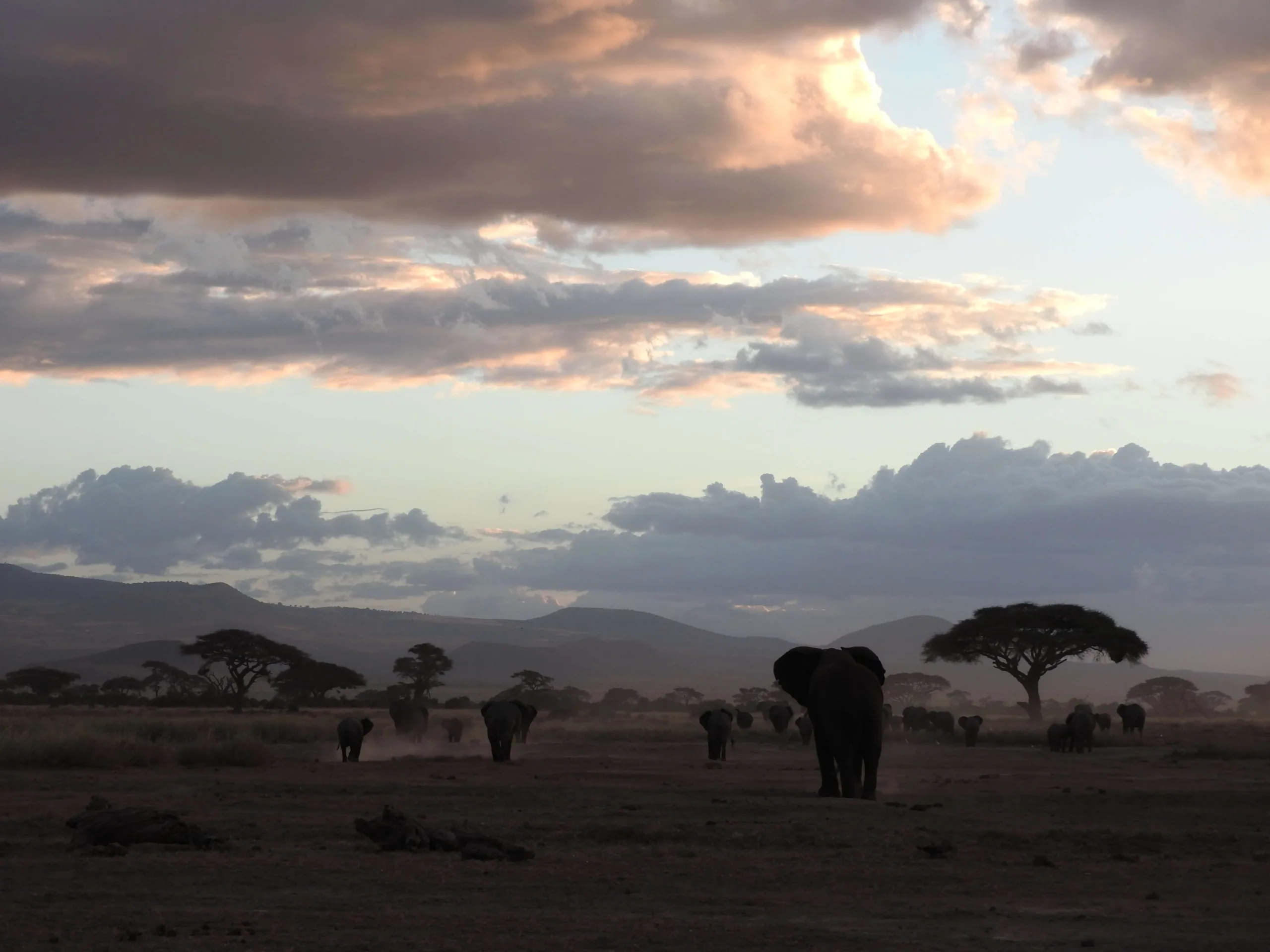
By: Katelyn Hammel
Amboseli: Where Water and Wildlife Meet
We have just completed a 5-day trip to Amboseli National Park. Amboseli (pronounced Empusel) means “salty dust” according to Maasai people. The “dust devils” from the dry loose volcanic soils associated with the formation of Mt. Kilimanjaro contrast drastically with the swamps and marshlands formed from springs whose waters emanate from an aquifer originating from Mt. Kilimanjaro.
Amboseli has huge local and global recognition. It is a UNESCO Man and Biosphere Reserve, an Important Bird Area and one of the prime protected areas in the world. Amboseli is one of the best places to view elephants in the world and one of the top places for birding in Africa. Spiced up with stunning views of Kilimanjaro, wildlife photography in Amboseli is priceless. It is also a place of water for livestock. Maasai livestock is supplied water from the park and allowed limited access to designated watering points inside the park.

Photo courtesy of Becky Gottlieb

Photo courtesy of Becky Gottlieb

Photo courtesy of Becky Gottlieb
A key focus of our trip to Amboseli was to better understand the role water plays in wildlife dynamics within the park and wider ecosystem. Students undertook field monitoring of wildlife and water interface by undertaking waterfowl counts and monitoring wildlife use of Amboseli Swamps. These were augmented by expertise talks from the park senior warden, park ecologists and researchers from the Amboseli Ecosystem based NGO, Lion Guardians. We feel lucky to be working with such respectable stakeholders who make our learning real and problem oriented. The park has also invited us to be part of their long-term monitoring team for large mammals and waterfowl in the park. We feel very proud and privileged to be part of the group shaping future conservation in Amboseli.

Elephants in the Amboseli swamps

Students monitoring waterfowl outside Amboseli

Photo courtesy of Becky Gottlieb
Related Posts

Cinder Cone Chronicles: Lessons from Drought, Data, and Determination

